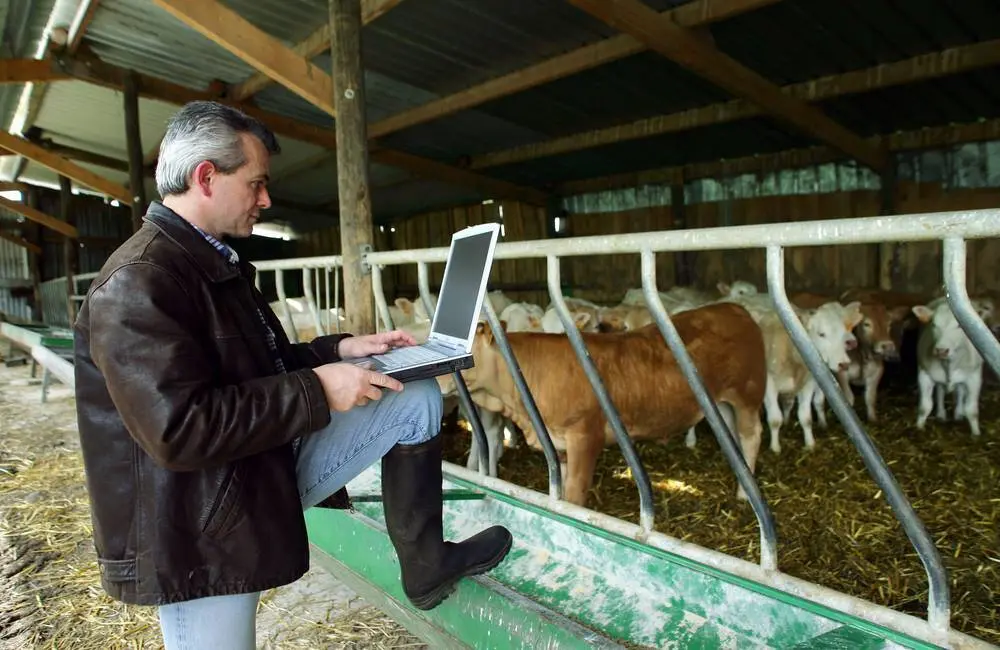In the spring of 2017, a group of software programmers from across a wide variety of industries gathered in San Francisco for a hackathon. The goal: finding how advanced technology and data analytics helps cattle ranchers and dairy farmers.
Or, as host company BovControl put it, creating an Internet of Cows. By connecting every cow on the planet to the Cloud and improving data collection, the Brazilian company is striving to improve the efficiency of the cattle industry.
“The bottom line is that in order to increase efficiency and production, we need more data on cattle, cattle producers and their land,” the company stated on the website about the initiative.
For those interested in getting into data science, it provides an interesting example of how analytics can improve lives. Not to mention another possible career field.
How Predictive Data Analytics Helps Cattle Ranchers
The use of analytics in cattle ranching has caught fire in recent years. Examples have come in from around the world. The use of analytics for cattle ranchers has been mentioned everywhere from the Farm Journal to the bestselling book, “Thank You For Being Late: An Optimist’s Guide to Thriving In The Age of Accelerations” by Thomas Friedman.
In the Farm Journal, a production manager with GE Industrial Intelligence Data offered details on research that helped determine that data analytics helps cattle ranchers by detecting illnesses.
All of the work with cattle involves placing sensors on individual cows to follow their movements. Data from these sensors is collected and compiled into a software system. Analysts can then breakdown and study the data to improve the ranch’s operation.
In the case of illness, it came down to steps.
Traditionally, cowboys keep an eye on cattle, using their judgment to determine which ones look sick. A big part of the issue was not that they ignored cattle that were sick. Rather, they often thought the cattle were exhibiting signs of illness when they were not ill. This resulted in time and money spent on treating healthy cows.
Using data from sensors, analysts found patterns in a cow’s steps that often happen before they fell ill. These patterns were used to better determine which cows needed separating from the herd and special treatment.
In short, data proved more efficient at managing the cows’ wellbeing than did the cowboys.
Managing Breeding In Japan
In his book, Friedman interviewed Joseph Sirosh, vice president of data in Microsoft’s Cloud and Enterprise Division. Sirosh used the example of cows to show the benefits of remote sensors and data analysis.
Dairy farmers teamed with Japanese computer company Fujitsu on improving the rate of success in breeding cattle. The central issue was finding the best time to artificially inseminate cows. They go into heat for just 16 hours every 21 days. Therefore, farmers guessed the best time for insemination.
Fujitsu engineers placed a pedometer on each cow that transmitted information on their movements using Microsoft Azure cloud technology.
Again, the issue came down to steps because the data revealed that female cows in heat step faster and more frequently. In conclusion, a system was designed to sent a text to farmers when female cows exhibited this stepping pattern.
With guesswork eliminated, Sirosh said the farmers saw a significant increase in conception rates in their herds.
Data also revealed that cows inseminated in the first four hours of the heat cycle had a higher chance of producing a female cows. Those inseminated the second four hours had a higher chance of producing a male.
These examples show how the connected cow has already helped the cattle industry. As companies such as BovControl work to connect even more cows, expect the number of insights to grow.
